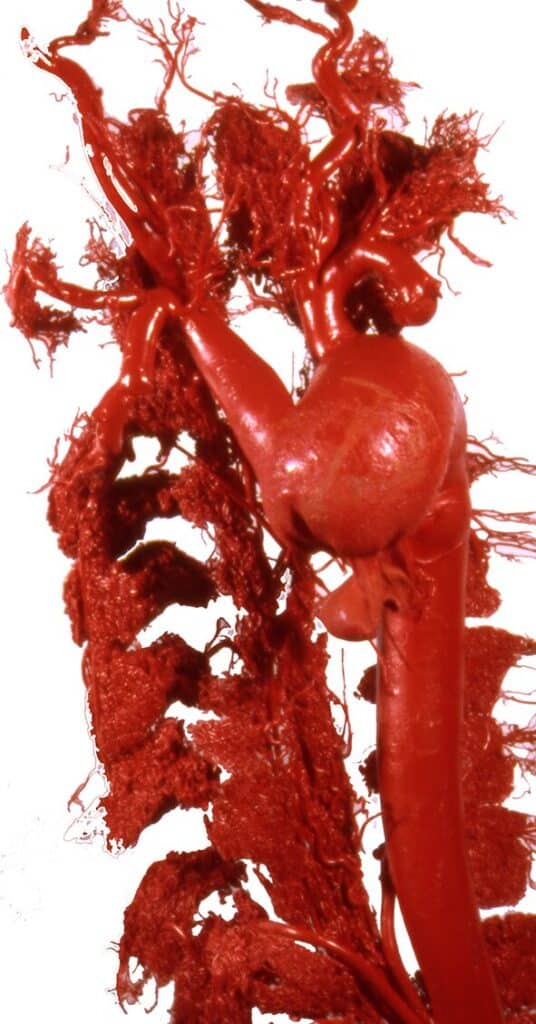
Scientists have figured out why the brain of a whale is not damaged when swimming
(ORDO NEWS) — Unlike land mammals, whales’ large blood vessels are entangled in a network of smaller arteries called the retia mirabilia, or “wonderful network,” which regulate blood pressure.
During intense movement, such as galloping, land mammals experience a “pulse” where blood pressure rises and falls with each step. Usually land animals do not move at such a pace for a long time, unlike marine counterparts, in particular whales.
Whales swim with the help of powerful tail movements, which must inevitably cause a “pulsation”, in which there is a difference in pressure of the blood entering and exiting the brain.
In the long run, this should lead to damage to small vessels and cerebral hemorrhage, but for some reason it does not happen.
Now, researchers seem to have figured out why: thanks to a special network of smaller blood vessels that entangle the brain and spine of whales and are called retia mirabilia , or “wonderful network.”
After collecting the biomechanical parameters of 11 species of cetaceans, the researchers used computer simulations to make sure that during the swimming of the animal, the “wonderful network” compensates for the pressure difference between the blood entering and exiting the brain.
As a result, thanks to the “miraculous network”, the difference in pressure between the blood entering and leaving the whale’s brain is about three percent, that is, insignificant.
To confirm the hypothesis, it would be necessary to conduct tests on live whales, but this is neither technically nor ethically feasible, since it would require placing the probe inside the whale’s arteries and veins.
In the future, scientists intend to continue to study the physiological adaptations of whales to life at sea: how their thorax responds to deep diving or how their lungs affect vascular pressure.
—
Online:
Contact us: [email protected]
Our Standards, Terms of Use: Standard Terms And Conditions.









